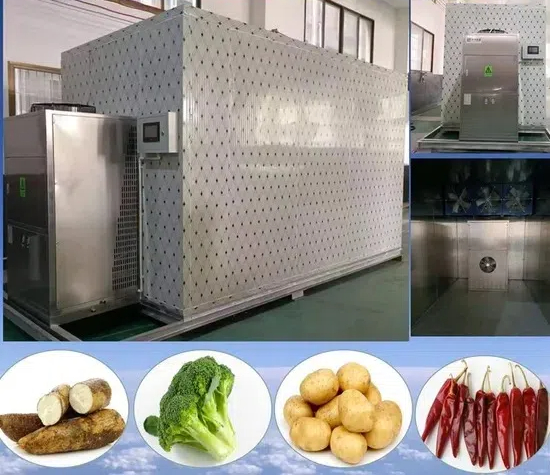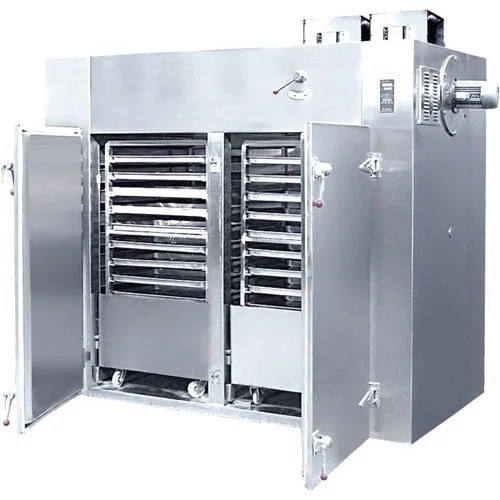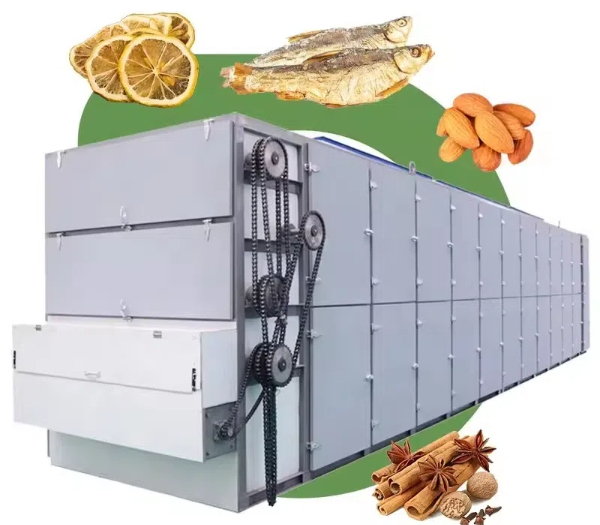
Content Menu
● Introduction to Food Drying Machines
>> Types of Food Drying Machines
● Benefits of Food Drying Machines
>> Cost Savings
>> Nutrient Preservation
>> Enhanced Flavor
>> Extended Shelf Life
>> Convenience and Versatility
● How Food Drying Machines Work
>> Components of a Food Drying Machine
● Applications of Food Drying Machines
● Commercial Impact of Food Drying Machines
>> Industrial Drying Equipment Features
● Choosing the Right Food Drying Machine
>> Tips for Using a Food Drying Machine
● Advanced Features in Modern Food Drying Machines
● Safety Considerations
● Environmental Impact
● Conclusion
● FAQ
>> 1. What are the benefits of using a food drying machine?
>> 2. How do food drying machines work?
>> 3. What types of food can be dried using a food drying machine?
>> 4. Why can't I use my oven to dehydrate foods?
>> 5. How do I maintain my food drying machine?
● Citations:
Food drying machines, also known as food dehydrators, are essential appliances for preserving various types of food by removing moisture. This process extends the shelf life of food while retaining nutrients and flavors. In this guide, we will delve into the world of room type drying machines, exploring their types, benefits, and applications.

Introduction to Food Drying Machines
Food drying machines work by circulating warm air around the food, gradually reducing its water content without cooking it. This method is crucial for preserving fruits, vegetables, meats, herbs, and even dairy products. The machines come in a range of sizes and configurations, making them versatile for both home use and commercial applications.
Types of Food Drying Machines
1. Batch Type Fruits and Vegetable Dryer: These machines use a heat pump dryer and can handle batches of 150 to 300 kg. They are automatic, featuring 48 trays, and require a power rating of 8 kW.
2. Small Single Door Tray Type Food Dehydrator: This compact machine uses hot air circulation with a high-temperature resistant axial flow fan. It has a capacity of 80 kg per batch and requires a power rating of 9 kW.
3. Large Industrial Food Dehydrator Machine: With a capacity of 350 kg per batch, these machines come with either 96 or 144 trays and require 20 kW of electricity.
4. Conveyor Mesh Belt Industrial Food Dryer: These are continuous drying machines suitable for large-scale production. They can be customized to meet specific production needs.
5. Continuous Potato Chips Dryer: Designed for drying potato chips continuously, this machine also removes excess oil from fried chips.
Benefits of Food Drying Machines
Cost Savings
Investing in a food drying machine can save money by allowing you to buy fruits and vegetables in bulk and preserve them for later use. Dried foods are often less expensive than fresh ones, making them a budget-friendly option.
Nutrient Preservation
Unlike freezing or canning, which can lead to nutrient loss, food drying machines preserve the nutritional content of food. Dried fruits like raisins and apricots are rich in antioxidants and minerals.
Enhanced Flavor
Drying fruits amplifies their natural sweetness and intensifies their aroma, making them a delicious addition to recipes.
Extended Shelf Life
Fresh fruits have a short shelf life, but dried fruits can last up to a year. This makes them convenient for stocking up on favorite snacks.
Convenience and Versatility
Food drying machines are easy to use and versatile. Once set, they work independently, allowing you to focus on other tasks.
How Food Drying Machines Work
Food drying machines operate by circulating hot air around the food to extract moisture. The process involves a heating element, a fan for air circulation, and trays for holding the food. The temperature is controlled to ensure even drying without cooking the food.
Components of a Food Drying Machine
- Heating Element: Provides the heat needed to dry the food.
- Fan: Circulates the hot air to ensure uniform drying.
- Trays: Hold the food in place during the drying process.
- Control Panel: Allows users to set temperature and time.

Applications of Food Drying Machines
Food drying machines are used in various industries:
- Food Preservation: Extends the shelf life of fruits, vegetables, and meats.
- Health and Wellness: Preserves nutrients and avoids additives found in commercial dried foods.
- Culinary Arts: Enhances flavors and textures in recipes.
Commercial Impact of Food Drying Machines
In the commercial sector, food drying machines play a crucial role in food security by extending shelf life and preventing spoilage. They are indispensable in the food supply chain, ensuring consistent quality and availability of dried products.
Industrial Drying Equipment Features
- Efficient Energy Use: Modern machines are designed to minimize energy consumption while maximizing drying efficiency.
- Precise Temperature Control: Ensures optimal drying conditions to preserve nutrients and flavors.
- Compact Design: Saves space and reduces transportation costs.
Choosing the Right Food Drying Machine
When selecting a food drying machine, consider factors such as capacity, temperature range, and energy efficiency. For commercial use, large industrial machines may be necessary, while smaller models suffice for home use.
Tips for Using a Food Drying Machine
- Preparation: Slice fruits and vegetables thinly for even drying.
- Temperature Control: Adjust temperature based on the type of food being dried.
- Tray Rotation: Rotate trays for uniform drying, especially in stacking models.
Advanced Features in Modern Food Drying Machines
Modern food drying machines often come with advanced features that enhance their functionality and efficiency:
- Digital Control Panels: Allow precise temperature and time settings.
- Automatic Shut-Off: Turns off the machine once the drying cycle is complete.
- Multiple Tray Layers: Increases capacity without increasing floor space.
Safety Considerations
When using a food drying machine, safety is paramount:
- Electrical Safety: Ensure the machine is placed on a stable surface away from water.
- Food Safety: Always clean and sanitize the machine after use to prevent bacterial growth.
- Operating Instructions: Follow the manufacturer's guidelines for operation and maintenance.
Environmental Impact
Food drying machines can have a positive environmental impact by reducing food waste and the need for refrigeration. They also promote sustainable food practices by allowing consumers to preserve seasonal produce.
Conclusion
Food drying machines are invaluable for preserving food, enhancing flavors, and extending shelf life. Whether for home use or commercial applications, these machines offer a cost-effective and nutritious way to enjoy a variety of foods year-round. By understanding the types, benefits, and applications of food drying machines, consumers can make informed decisions about which model best suits their needs.

FAQ
1. What are the benefits of using a food drying machine?
- Cost Savings: Dried foods are often cheaper than fresh ones.
- Nutrient Preservation: Retains more nutrients compared to freezing or canning.
- Enhanced Flavor: Intensifies natural flavors and aromas.
- Extended Shelf Life: Dried foods last longer than fresh ones.
2. How do food drying machines work?
Food drying machines work by circulating hot air around the food to extract moisture. This process is controlled by a heating element and fan, ensuring even drying without cooking the food.
3. What types of food can be dried using a food drying machine?
You can dry a wide range of foods, including fruits, vegetables, meats, herbs, and even dairy products. This versatility makes food drying machines useful for various recipes and snacks.
4. Why can't I use my oven to dehydrate foods?
Ovens do not offer the precise temperature control needed for dehydrating foods. They can also cook the food instead of just removing moisture, leading to a loss of nutrients and flavor.
5. How do I maintain my food drying machine?
Regular cleaning is essential to prevent bacterial growth and ensure hygiene. Check the machine's manual for specific maintenance instructions, and always follow safety guidelines when operating electrical appliances.
Citations:
[1] https://blazemac.com/food-drying-machine-mastering-food-preservation.html
[2] https://airtekdehydrator.com/blog/types-commercial-food-dehydrators/
[3] https://airtekdehydrator.com/blog/benefits-of-a-fruits-drying-machine/
[4] https://www.bxdryer.com/news/industry-news/how-food-dehydrator-works-news.html
[5] https://www.gemdryers.com/important-food-drying-equipment-features-and-their-commercial-impact/
[6] https://www.istockphoto.com/photos/food-dehydrator
[7] https://www.youtube.com/watch?v=Fhv8Lf5L8Iw
[8] https://www.webstaurantstore.com/guide/741/food-dehydrators-buying-guide.html
[9] https://www.seriouseats.com/best-food-dehydrators-5216308
[10] https://www.linkedin.com/pulse/common-questions-food-dehydrators-aradmachinery
[11] https://www.ukjuicers.com/dehydrator-faqs-a603
[12] https://excaliburdehydrator.com/pages/faqs
[13] https://www.thepurposefulpantry.com/dehydrating-faq/
[14] https://extremewellnesssupply.com/blogs/news/how-does-a-dehydrator-work
[15] https://gcwgandhinagar.com/econtent/document/1588156026Unit%20V%20Types%20of%20dryers%20and%20their%20applications.pdf
[16] https://en.wikipedia.org/wiki/Food_dehydrator
[17] https://food-drying-machine.com
[18] https://www.bestbuy.com/discover-learn/10-reasons-to-buy-a-food-dehydrator/pcmcat1634332391134
[19] https://www.istockphoto.com/photos/dehydrator
[20] https://stock.adobe.com/search?k=dehydrator
[21] https://www.youtube.com/watch?v=Zl4wTcCPJu0
[22] https://www.hachettebookgroup.com/storey/buying-food-dehydrator/
[23] http://bushcraftusa.com/forum/threads/food-dehydrator-questions.288768/
[24] https://www.modelcarsmag.com/forums/topic/132971-food-dehydrator-questions/
[25] https://www.reddit.com/r/Cooking/comments/12umm6q/do_food_dehydrators_cook_the_food/
[26] https://food-drying-machine.com/food-drying-equipment
[27] https://www.webmd.com/diet/dehydrating-food-good-for-you
[28] https://www.alamy.com/stock-photo/food-dehydrator.html
[29] https://www.ike.cn/video.html
[30] https://www.dehydratorsamerica.com/category/shop-all
[31] https://www.youtube.com/watch?v=Namf-Ddo_Xo
[32] https://www.youtube.com/watch?v=pfTeh6gwr3Y
[33] https://rawmazing.com/recipe/raw-food-equipment-questions-dehydrators/
[34] https://www.youtube.com/watch?v=tWcw1WOSVv4
[35] https://ask.metafilter.com/316713/Dehydrator-DIY-fix-it











